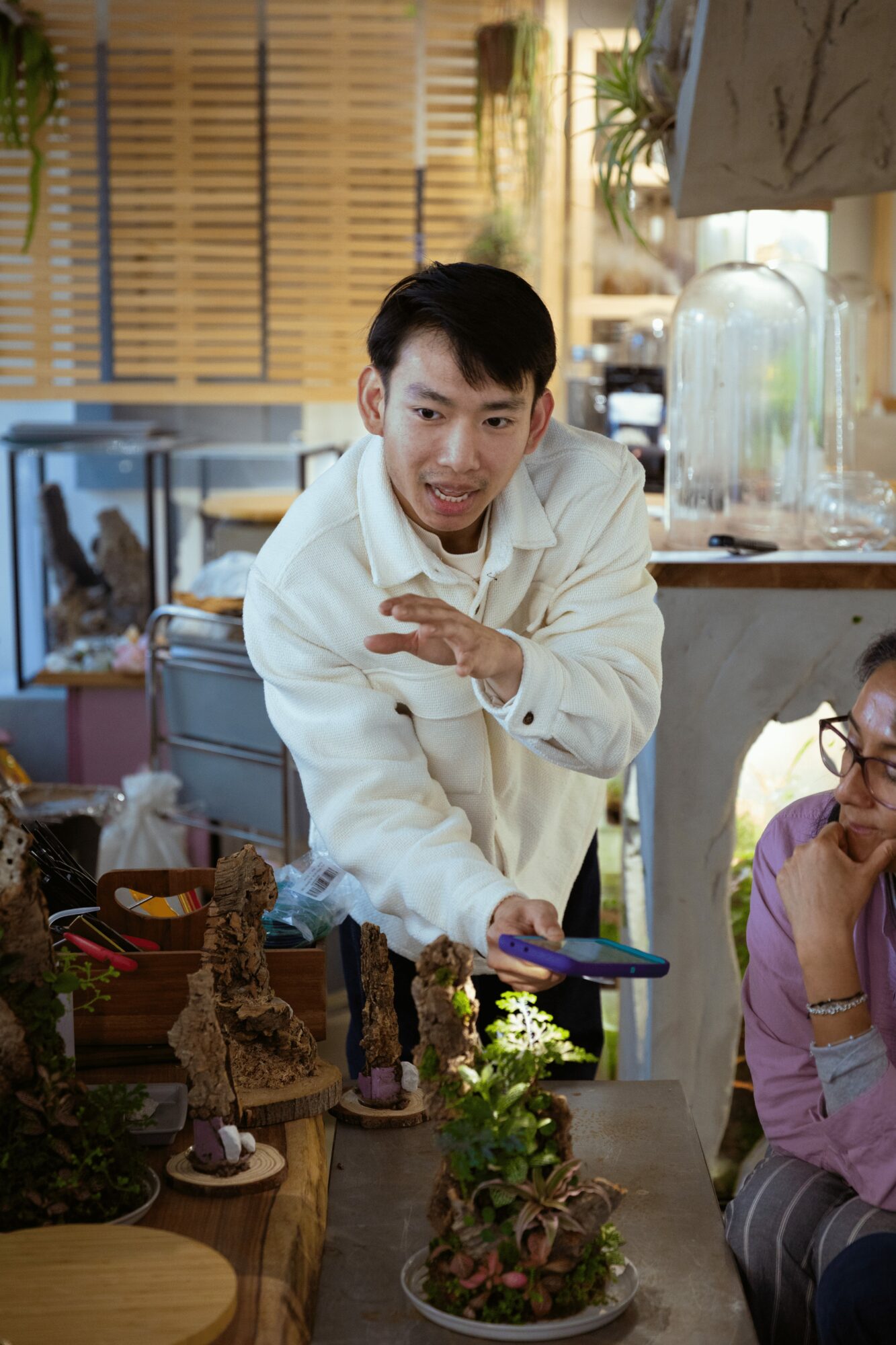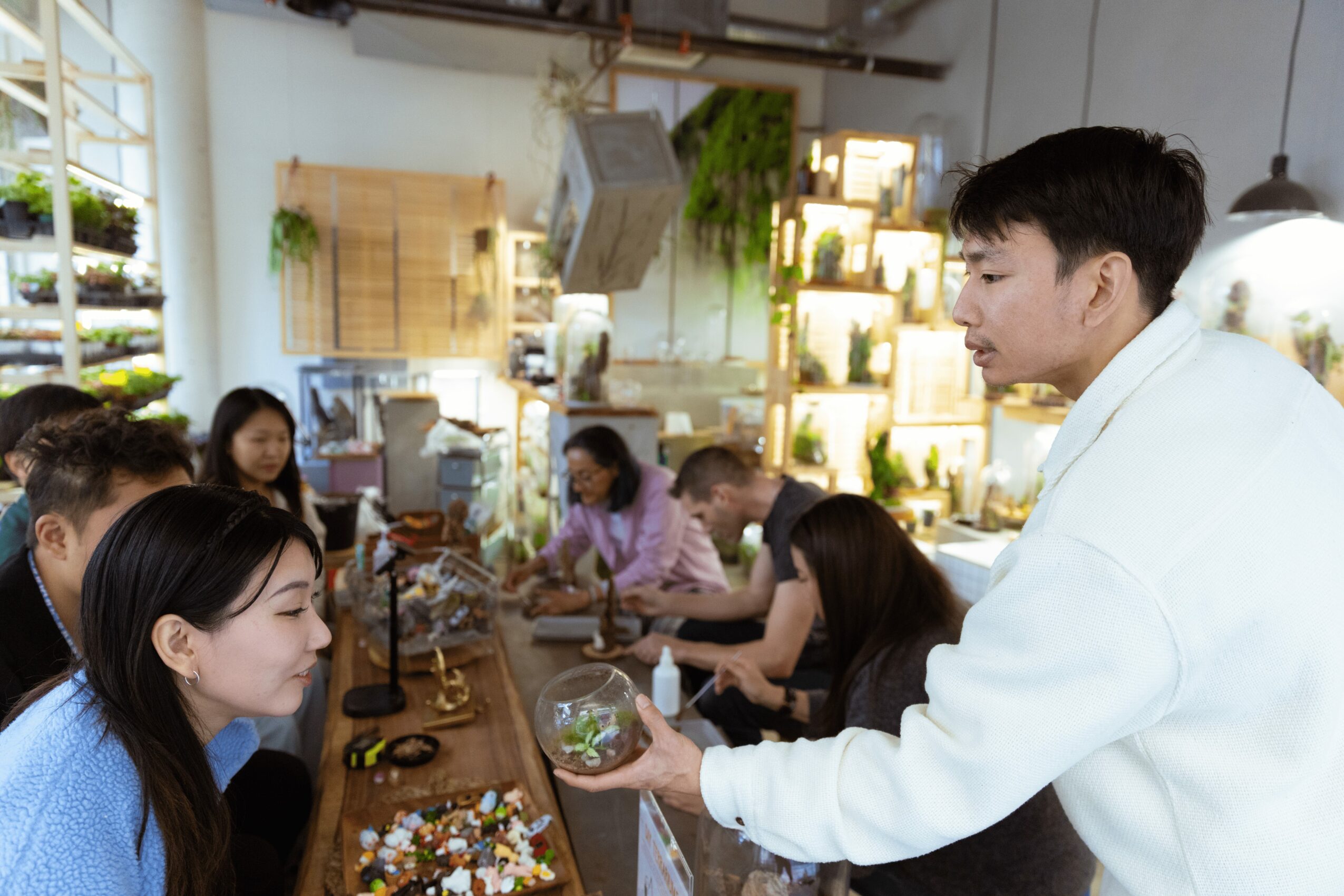

Today we’d like to introduce you to Ryan Vu
Hi Ryan, we’d love for you to start by introducing yourself.
Like many people, I got into houseplants during the pandemic. My collection quickly outgrew my home—I had no idea how big these plants could get. That led me to terrariums, a way to create small, self-contained greenhouses in a more intentional, controlled way. Soon, my bedroom was overflowing with glass containers, each holding its own micro-ecosystem.
Working with terrariums changed how I saw plants. I began noticing the quiet ways they interacted with their environment—how moss clings to rocks, how ferns reach for moisture, and how tiny insects consume organic materials to feed back into the ecosystem. These observations made me see nature differently—a vast, interconnected, and complex system with many roles to play in keeping everything, including us humans, alive.
This deeper awareness spilled into my everyday life. A walk through a mossy forest felt richer, more alive. Nature felt less distant, more present, reminding me of its importance and the need to care for it.
Eventually, I needed more space, so I found an art studio in DTLA. Wanting to share my creativity, I started hosting how to build terrarium workshops here to teach what I’ve learned about creating dynamic ecosystems, hoping to inspire others to care for nature and advocate for its preservation.
Can you talk to us a bit about the challenges and lessons you’ve learned along the way. Looking back would you say it’s been easy or smooth in retrospect?
It hasn’t been a completely smooth road. There were definitely challenges along the way. Starting out, I didn’t always have the space or resources to bring my ideas to life. My bedroom was overflowing with plants and terrariums, which made it hard to focus and experiment. Finding a studio was a huge step, but it also came with its own set of challenges—like figuring out how to balance the creative side of things with the business side, and learning how to promote my work in a way that resonates with others.
The learning curve with terrariums was steep too—understanding the balance of humidity, light, and the plants’ needs took time and experimentation. But over time, I’ve learned to embrace the process, knowing that setbacks are just part of the creative journey.
As you know, we’re big fans of you and your work. For our readers who might not be as familiar what can you tell them about what you do?
I went to school for architecture and business, but my passion for creating has always been at the heart of what I do. My family runs a Vietnamese restaurant called “All That Pho,” where I help manage the business behind the scenes while also building my own plant shop.
I specialize in creating unique terrariums and small ecosystems that reflect the complexity and beauty of nature. My work focuses on capturing the delicate balance between plants and their natural habitats, transforming them into living sculptures that are both visually captivating and sustainable.
What I’m most proud of is the community I’ve built through my workshops, where I’ve been able to inspire others to connect with nature. My goal is to show people how to cultivate their own ecosystems, turning their spaces into reflections of nature’s harmony. Ultimately, it’s about making nature accessible, so we can all play a part in preserving it.
So, before we go, how can our readers or others connect or collaborate with you? How can they support you?
I want to collaborate on projects that bring nature into public spaces. I’m eager to partner with museums, galleries, and other public institutions to create immersive installations that allow people to experience nature in new ways. Whether it’s designing large-scale terrariums or creating interactive ecosystems, I’m looking to connect and seek innovative collaborations that merge art, design, and nature.
Contact Info:
- Website: https://linktr.ee/jungleboxstudio
- Instagram: https://www.instagram.com/jungleboxstudio/




Image Credits
Brian Lee https://www.instagram.com/











